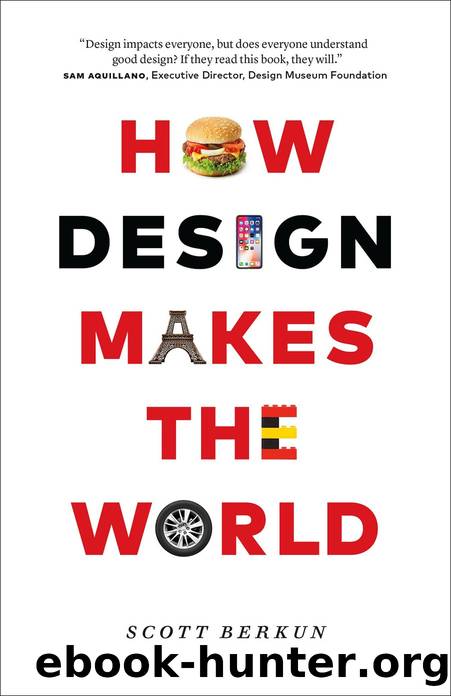How Design Makes the World by Unknown

Author:Unknown
Language: eng
Format: epub
ISBN: 9780983873181
14
The Design Reflects the Team
If I asked you to make a smart watch for an undercover international top-secret agent, could you do it? Do you know at least seven languages, including Arabic (which is read right-to-left)? And could you make sure your design works well in all of them? Have you practiced Krav Maga, jiu-jitsu and judo, to ensure the watch won’t interfere with self-defense? And do you have skydiving, deep-sea diving and hang-gliding experience to make sure it works well in the full range of realistic, and not at all based on action movies with undercover agents in them, activities? Even the best designer would struggle, as being an undercover agent is too different from their own experiences.
Currently, about 70 percent of designers in the US are white.¹ And a majority of people in power in most corporations are men.² I’m a white man myself, but I’m aware of the fact that half the species are not men, and most people on earth, about 70 percent, are not white.³ To make anything good, whether it’s a book or a smart watch, I have to know that most people who will use it won’t be exactly like me. And while the consequences of making bad assumptions in a book are one thing, for someone designing a sidewalk, a software product or a law, the impact on people can be devastating.
When Carol E. Reiley was working on a PhD in robotics, she built a way for a surgical robot to work with voice recognition.⁴ The problem was that the voice recognition software she used, developed by Microsoft, couldn’t recognize her voice. The team of people who had built it were all men: they trained their software using their own voices. In order for her to use it, she had to lower her voice, which must have been demoralizing.
The people who built the software didn’t do this intentionally. They were simply working hard to build their project. Since it’s easier to test things on yourself than to find volunteers, that’s what they did. But the consequence was that their user, Reiley, couldn’t represent her own project: her voice was literally taken away.
This situation is what Kat Holmes, author of Mismatch: How Inclusion Shapes Design, explains as an exclusion habit: a pattern of assumptions that seems to have worked in the past, but which keeps you blind to problems you’re creating. As design and product leadership expert Kim Goodwin explains, even for a good-natured person, “we can’t imagine types of harm we have never seen or heard about.”⁵ Responsible creators must accept that they will exclude people, unless they work to prevent it. Despite Nils Bohlin’s seat belt and decades of car safety improvements, today women are 50 percent more likely to be injured in car crashes, as test dummies are still based on the male anatomy.⁶ Sadly, standard operating procedure in many industries hides habits of exclusion.
The best way to avoid exclusion habits is simple: the more diverse your team is, the more perspectives that will be in the room as ideas are discussed.
Download
This site does not store any files on its server. We only index and link to content provided by other sites. Please contact the content providers to delete copyright contents if any and email us, we'll remove relevant links or contents immediately.
Kathy Andrews Collection by Kathy Andrews(10520)
The remains of the day by Kazuo Ishiguro(7551)
Spare by Prince Harry The Duke of Sussex(4198)
Paper Towns by Green John(4169)
The Body: A Guide for Occupants by Bill Bryson(3802)
Be in a Treehouse by Pete Nelson(3213)
Harry Potter and the Goblet Of Fire by J.K. Rowling(3046)
Goodbye Paradise(2963)
Never by Ken Follett(2880)
Into Thin Air by Jon Krakauer(2701)
The Remains of the Day by Kazuo Ishiguro(2618)
The Genius of Japanese Carpentry by Azby Brown(2609)
The Cellar by Natasha Preston(2595)
Drawing Shortcuts: Developing Quick Drawing Skills Using Today's Technology by Leggitt Jim(2532)
120 Days of Sodom by Marquis de Sade(2438)
Architecture 101 by Nicole Bridge(2350)
The Man Who Died Twice by Richard Osman(2300)
Machine Learning at Scale with H2O by Gregory Keys | David Whiting(2291)
Fairy Tale by Stephen King(2070)
